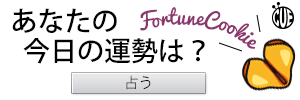日本文化を英語で説明しよう!
恵方巻編~Ehomaki~
何で節分に太巻きを食べるの?
由来と背景を説明してみよう

近年、節分の恒例イベントとして豆まきと同じくらい定着してきた「恵方巻き」。在日歴の長いネイティブ外国人も、なぜこの時期にコンビニやスーパーで太巻きをよく見るのか不思議に思っている人が多いようです。今年は英語で説明してみましょう。
What is Eho-maki?
恵方巻きとは?
According to the old lunar calendar of Japan, February 3rd is the day before the first day of spring. To ward off illness and misfortune, on this day Japanese families scatter roasted soy beans inside their homes and out of every window and door.
旧暦によると2月3日が日本では春のはじまりの前日とされており、その日には病や不運を家庭から取り除くために福豆(炒り豆)を家の内外に投げます
In Japanese, the day is called “Setsubun” which translates as “bean scattering ceremony day”. Traditionally, this is also the day to eat “Eho-maki”.
その日を「節分」と呼び、豆まきの日として知られていますが、恵方巻きを縁起物として食べる日でもあります
Eho-maki are thick sushi rolls which is believed to bring good fortune if eaten while facing the year’s “Eho” (good luck direction).
恵方巻きは、節分にその年の「恵方」(吉方位)を向いて食べると縁起が良いとされる太巻きです
Eho-maki usually have seven ingredients such as cucumber, sweet omelet, shiitake mushroom and eel after the Seven Deities of Good Luck.
恵方巻きには七福神にちなんで、「きゅうり」「伊達巻」「しいたけ」「うなぎ」など7種類の具材が入っています
On average, Eho-maki are about 8-10cm long.
恵方巻きは、平均して8〜10cmの長さです
How to eat Eho-maki?
恵方巻きの食べ方とは?
While you eat Eho-maki, you must be silent.
恵方巻きを食べる時は、黙って食べなくてはいけません
Eho-maki are also called “Maru-kaburi-sushi” (swallowing sushi) because of the traditional way to eat it: make a wish, close your eyes and eat the roll uncut, all while facing the Eho.
恵方巻きは、目を閉じて願い事を思い浮かべながら、恵方に向かって一本丸ごとの海苔巻きを丸かぶりすることから、「丸かぶり寿司」とも呼ばれています
The eating of Eho-maki without cutting reflects the idea of forming good relationships.
恵方巻きを切らずに丸ごと一本食べるのは、「縁を切らない」という意味が込められているからです
In 2017 the Eho (good luck direction) is north‐northwest.
2017年の恵方は北北西です
There is no time setting when to eat Eho-maki.
恵方巻を食べる時間に特に決まりはありません
History of Eho-maki
恵方巻きの歴史
Some people believe that the origin of Eho-maki is a custom followed at the end of the Edo Period (1860s) in Osaka, of wishing good fortune for fisherman.
起源は江戸時代末期、大阪の船場で商売繁盛の祈願をする風習として始まったものという説があります
It is also believed figuratively that Eho-maki resemble a demon’s metal rod, and that demons can be stopped by eating the whole thing.
太巻きを、逃げた鬼が忘れていった金棒(鬼の金棒)に見立てて、鬼退治と捉える説もあります
Eho (the year’s good luck direction) is determined by the year’s zodiac sign. In 2016 this is the Monkey. The goddess of lucky directions, Toshitoku-jin, is believed to remain at the Eho during the year.
恵方とは、その年の干支によって定められた最も良いとされる方角で、歳徳神(としとくじん)がいるとされています
The custom of Eho-maki today
現在の恵方巻きの風習
The custom of Eho-maki has spread rapidly in Japan since 2003, when supermarkets and convenience stores began heavily advertising the event.
2003年くらいから全国のスーパーやコンビニエンスストアで販売され大きく宣伝されたことから、節分に恵方巻きを食べるという風習が急速に全国に広まりました
For those who do not enjoy eating Eho-maki, the stores sell other options like roll cakes.
近年では太巻きが苦手な人でも節分を楽しめるように、ロールケーキなどをお勧めするお店もあります
Roll cakes are more likely to be considered as products following the Eho-maki Trend.
ロールケーキはどちらかと言うと、恵方巻の形に似ていることから、イベントに便乗した商品とも言えます
Although Setsubun is in February, soon after the new year the advertising and sale of Eho-maki begins in Japan.
お正月が過ぎると、スーパーやコンビニエンスストアなどでも、チラシや実際の恵方巻きが売られているのを目にすることがあります
According to a survey in 2002, only 53% of Japanese people were aware of what Eho-maki are, despite the long-standing custom.
大阪では古くから親しまれていましたが、2002年には53%の日本人しか恵方巻きが何かを知らないというアンケート結果もありました
Eating Eho-maki remains a popular Japanese custom today. Around the time of Setsubun, all over Japan there are events where people can make and eat Eho-maki.
節分の季節になると、各地で恵方巻きを食べたり作ったりするイベントが行われるようになり、認知度は上がってきています
Eho-maki are popular not only because of tradition but also because they make mothers’ meal preparation easier.
恵方巻きは伝統行事としてだけではなく、お母さんたちの夕食準備が楽になるという理由で人気が出ています

ライタープロフィール●Yurika L Fabre
結婚して10年目を迎えたオーストラリア人の夫と、ハーフの子どもたちと都内在 住。アメリカ留学やひとり縦断旅、オーストラリアでのワーキングホリデーや大学生生活、仕事を経て学 んだ文化や言葉の違いの面白さについて発信している。



















